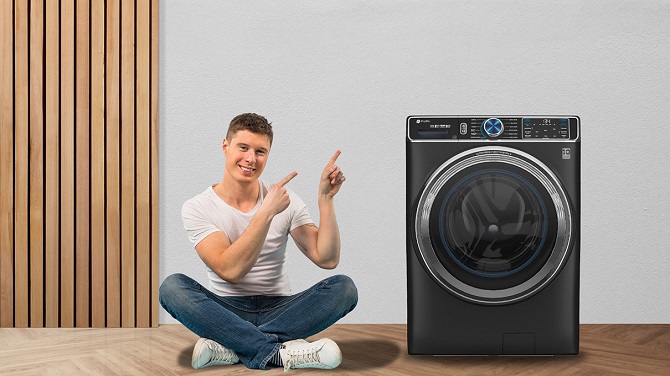Is your GE washer causing you headaches? Fear not! With the right troubleshooting skills and effective techniques, you can often tackle common issues without the need for costly repairs. In this comprehensive guide to GE washer repair, we will equip you with valuable tips and techniques to restore your washer's functionality.

-
Power and Connectivity Checks:
- Confirm that your washer is securely plugged into a functional power outlet.
- Check the circuit breaker to ensure it hasn't tripped.
- Verify that the water supply valves are fully open, providing adequate water pressure.
-
Decoding Error Codes:
- Pay attention to any error codes displayed on the control panel. Decipher their meanings using the user manual or GE's online resources to find suitable solutions.
-
Essential Cleaning and Maintenance:
- Regularly clean the detergent dispenser to prevent residue buildup that may affect performance.
- Maintain a clean rubber door gasket to prevent the growth of mold and mildew.
- Clear any obstructions and clean the drain pump filter to avoid drainage problems caused by clogs.
-
Water Supply Woes:
- For inadequate filling, inspect water inlet hoses for kinks or blockages.
- Ensure the water inlet valve is functioning correctly. Consider replacing it if found faulty.
-
Tackling Uneven Loads:
- Avoid overloading the washer, which can lead to imbalance issues, excessive shaking, or error codes.
- Distribute the laundry evenly inside the drum for a more balanced and efficient wash.
-
Addressing Noisy Operation:
- Tighten any loose screws or bolts that may cause excessive noise during operation.
- Examine drum bearings and replace them if signs of damage or wear are evident.
-
Resolving Spinning Issues:
- Check the drain hose and pump for any obstructions hindering proper spinning and draining.
- Inspect the drive belt for damage or wear and replace it if necessary.
-
Lid Switch Evaluation:
- Test the functionality of the lid switch if your washer fails to start or stops mid-cycle. Replace if found defective.
-
Navigating the Electronic Control Board:
- Resetting the control board may resolve problems arising from a malfunctioning board. Consult the user manual for instructions on performing a reset.
-
Seeking Professional Assistance:
- If all troubleshooting techniques have been exhausted or if the issue requires specialized knowledge, it is advisable to contact a certified GE appliance repair technician. They possess the expertise to diagnose and resolve complex problems effectively.
Always prioritize safety during repairs and troubleshooting. When in doubt or uncomfortable with any procedure, consult a professional. By mastering these GE washer repair tips and techniques, you'll be equipped to overcome minor issues and restore the optimal functionality of your washer.

No comments yet